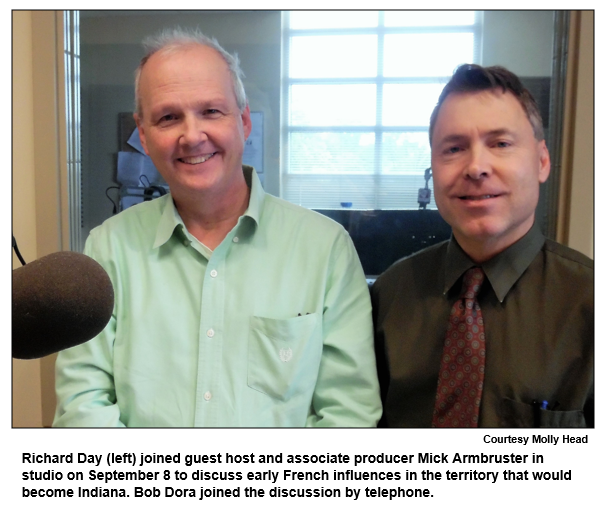Saturdays, noon to 1 p.m. ET on WICR 88.7 FM.
Or listen live from anywhere on WICR Online!
Our call-in number during the show: (317) 788-3314

September 15, 2018
Early Mexican heritage in Indiana
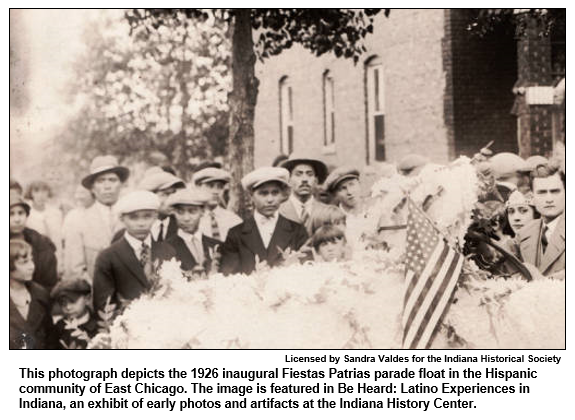
Although current immigration from Mexico has been in the news almost daily of late, how many Hoosiers know about the deep history of Mexican heritage in Indiana that began nearly 100 years ago?
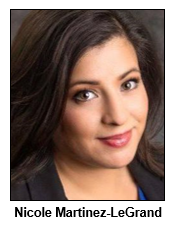
Nicole, whose ancestors came from Mexico to the Indiana Harbor area of Lake County as early as 1918, is the coordinator of multicultural collections for the Indiana Historical Society. She has organized Be Heard: Latino Experiences in Indiana, an exhibit of early photos of - and artifacts associated with - Indiana's early Latino population, including a doll that belonged to her Mexican ancestors. The exhibit at the Eugene and Marilyn Glick Indiana History Center will continue through Nov. 3.
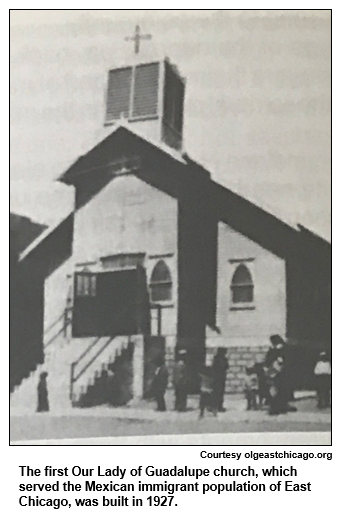
But that will be the primary focus. According to Nicole, a massive strike in the U.S. steel industry in 1919 - as well as the Mexican Revolution that extended from 1910 to 1920 - were among the factors that led to waves of Mexican immigration to northwest Indiana. Many settled in East Chicago and other communities in Lake County. Like Nicole's ancestors, they took jobs in the steel mills alongside waves of Eastern European immigrants.
Mexican immigrants helped raise funds for Our Lady of Guadalupe Church in East Chicago; in 1927, it opened as the first Latino Catholic Church in Indiana, according to Nicole's research. A ledger kept by Nicole's great-grandmother, who raised funds for construction of the church, and the family's storyline is featured in the Be Heard exhibit.
Other factors affecting the impact of early Mexican heritage in Indiana involved restrictions on Eastern European immigration to the U.S. after World War I. Enacted during the mid-1920s, those restrictions resulted in an increase in the percentages of Mexican immigrants. We explored the restrictions on Eastern Europeans in the 1920s during a radio show on July 7 about Ellis Island, immigration and Indiana (click here for the podcast).
During the mid-1920s, the parents of Irene Osorio immigrated from Mexico to Indiana Harbor. Irene, who lives in Crown Point today, will be a call-in guest during the show.
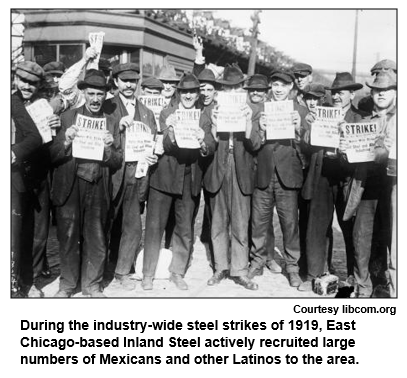
Although the initial newspaper stopped publishing during the 1930s, family members eventually founded The Latin Times, a newspaper that served the Latino community in northwest Indiana until the early 1980s, when it ceased publication.
By then, many Mexican families had been living in Indiana for multiple generations. During the steel strike of 1919, East Chicago-based Inland Steel actively recruited large numbers of Mexicans and other Latinos to the area. Initially, many were "unaccompanied young men known as solos," according to the Be Heard exhibit. Once the strike ended, wives and other family members often joined the young men in northwest Indiana.
In addition to working in the steel mills, the exhibit notes, "Latinos also developed their own small businesses, including a print shop, bakery, restaurants and grocery stores."
History Mystery
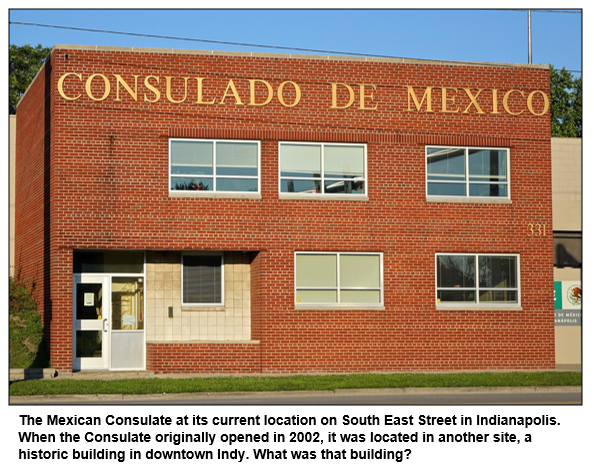
An international consulate in the United States is similar to a branch office of the foreign country's government. In 2002, the Mexican Consulate made Indianapolis history by becoming the first international consulate in the Hoosier capital.
The Mexican Consulate originally opened in a landmark building that's listed on the National Register of Historic Places. Before the consulate opened in the massive, historic structure in downtown Indy, Mexican citizens and immigrants living in Indiana who needed documents such as birth and death certificates had to travel to a consulate in Chicago.
After being housed for several years in the landmark structure - which was built in the 1880s - the Mexican Consulate moved to a self-standing building on the southeast edge of downtown Indy.
Question: What landmark building was the initial home of the Mexican Consulate in Indianapolis?
The call-in number is (317) 788-3314. Please do not call in to the show until you hear Nelson pose the question on the air, and please do not try to win if you have won any other prize on WICR during the last two months. You must be willing to give your first name to our engineer, you must answer the question correctly on the air and you must be willing to give your mailing address to our engineer so we can mail the prize pack to you. The prizes are a gift certificate to Story Inn in Brown County, courtesy of Story Inn, and two admissions to the Indiana History Center, courtesy of the Indiana Historical Society.
Roadtrip: Beasley's Orchard - a hayride to the pumpkin patch, and more!
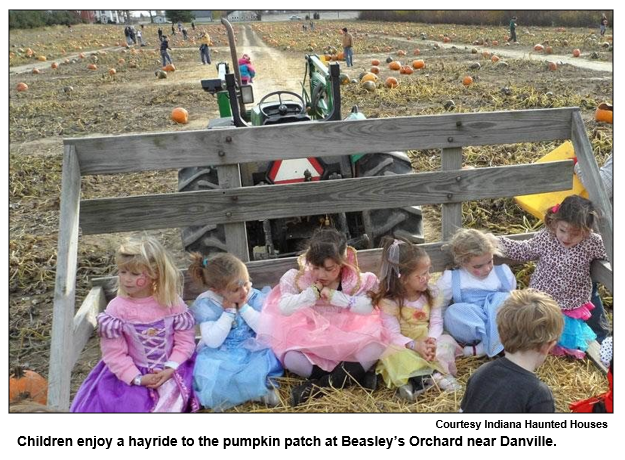
Guest Roadtripper and history enthusiast Jake Oakman says that with the nip of autumn in the air, it's a great time to head out to Beasley's Orchard near Danville in Hendricks County. Beasley's is open year round and is only a short drive from Indianapolis. It has great u-pick apple tree orchards and pumpkin patches, delicious apple cider and a Barn Market.
If the prospect of picking apples and sipping cider isn't enough to lure the kids away from their videogames, consider this Beasley's entertainment option: apple cannons! Visitors can launch apples from air-compressed cannons, shooting at targets or just letting them rip! Even adults are sure to find fruit-based artillery fire to be a real blast!
Jake points out that Beasley's Orchard is probably most famous for its Corn Maze; the intricate designs can only be seen from thousands of feet in the air, but the real fun lies in finding your way out of the eight-acre labyrinth of maise.
"It all adds up to a perfect destination for spending a day with friends and family," says Jake.
Talking French (influence) with Richard Day and Bob Dora
Post our podcasts, please!
As readers have surely noticed, we are posting links to weekly podcasts of Hoosier History Live at the top of our newsletter and website, generally on the Friday following the live Saturday show. Feel free to copy and paste the links to our podcasts anywhere you connect with others on the Internet. Tweet it to your followers and post it to your FaceBook friends - we love social media! We do request that you not edit or alter the audio files because they contain underwriter credits, and we need their support!
When you do post a podcast link, we appreciate it if you put "Courtesy of Hoosier History Live" and a link to our website www.hoosierhistorylive.org next to the post. As with all media, the more people know about us, the better.
Nelson Price, host and historian
Molly Head, producer/project manager, (317) 927-9101
Michael Armbruster, associate producer
Cheryl Lamb, administrative manager
Richard Sullivan, senior tech consultant
Pam Fraizer, graphic designer
Garry Chilluffo, special events consultant

Please tell our sponsors that you appreciate their support!

 Acknowledgments to Monomedia, Visit Indy, WICR-FM, Fraizer Designs, Heritage Photo & Research Services, Henri Pensis, Chris Shoulders, Aaron Duvall, and many other individuals and organizations. We are an independently produced program and are self-supporting through organizational sponsorship, and by individual contribution at the yellow button on our newsletter or website. For organizational sponsorship, which includes logos, links, and credits in the show, contact Molly Head at (317) 927-9101 or email her at molly@hoosierhistorylive.org. And any of our podcasts can be sponsored for a nominal fee.
Acknowledgments to Monomedia, Visit Indy, WICR-FM, Fraizer Designs, Heritage Photo & Research Services, Henri Pensis, Chris Shoulders, Aaron Duvall, and many other individuals and organizations. We are an independently produced program and are self-supporting through organizational sponsorship, and by individual contribution at the yellow button on our newsletter or website. For organizational sponsorship, which includes logos, links, and credits in the show, contact Molly Head at (317) 927-9101 or email her at molly@hoosierhistorylive.org. And any of our podcasts can be sponsored for a nominal fee.
Thank you!
We'd like to thank the following recent, new and renewal contributors whose donations help make this show possible!
- Dave and Theresa Berghoff
- Ann S. Frick
- Adam Rickert
- Carol Bacon
- Robin Jarrett
September 22, 2018 - Upcoming
Epidemics in Indiana history: encore presentation
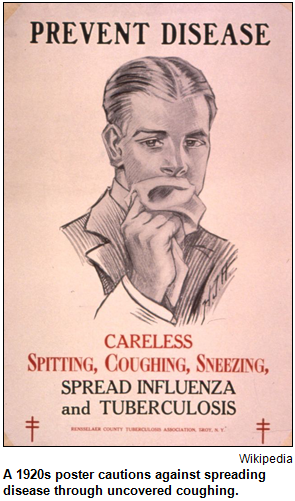 With flu season on the horizon, Hoosier History Live will revisit a show from November 15, 2014, exploring epidemics in Indiana's past.
With flu season on the horizon, Hoosier History Live will revisit a show from November 15, 2014, exploring epidemics in Indiana's past.
Did you know that a malaria epidemic swept Indianapolis just as the Hoosier capital was getting under way in the 1820s? Some doctors blamed the epidemic on the swamps and marshland that were on the new city's site, chosen because of its central location.
The impact of that early epidemic, plus others that affected Indiana, are the focus of this encore broadcast featuring two Indianapolis-based medical historians as Nelson's studio guests.
The influenza epidemic of 1918, a cholera epidemic of the mid-1800s, the polio scare that prevailed for most of the first half of the 20th century and the AIDS epidemic that caused panic during the 1980s and '90s are among the crises explored during the show.
Nelson and his guests also explore the devastating impact of tuberculosis during the late 1800s and early 1900s - even though "epidemic" may not be the most accurate term to describe the widespread TB cases. (Tune in to the show for an explanation.)
Our studio guests are:
- Dr. William McNiece, president of the Marion County Historical Society. Dr. McNiece is an anesthesiologist at IU Health's Riley Hospital for Children.
- Bill Beck, an author and historian who has written dozens of books about business and institutional history, including histories of Indiana hospitals. The founder of Lakeside Writers' Group, he is treasurer of the Marion County Historical Society.
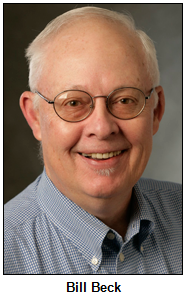 During the show, our guests share insights about the panic over potential epidemics, including a swine flu scare in 1976, when a vaccination program encountered various public relations problems. Fears of an epidemic proved unfounded.
During the show, our guests share insights about the panic over potential epidemics, including a swine flu scare in 1976, when a vaccination program encountered various public relations problems. Fears of an epidemic proved unfounded.
Time-traveling much farther back, outbreaks of cholera during the 1830s, '40s and subsequent decades caused extreme panic in many Indiana communities.
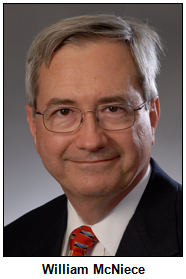 Take the town of Aurora on the Ohio River, which had a population of 2,000 in 1849. Fourteen deaths from cholera were reported in one day, according to a historical account supplied by Dr. McNiece, an associate professor at the IU School of Medicine. During the next three weeks in 1849, 51 other victims died in Aurora. As a result, 1,600 of the 2,000 residents fled the town.
Take the town of Aurora on the Ohio River, which had a population of 2,000 in 1849. Fourteen deaths from cholera were reported in one day, according to a historical account supplied by Dr. McNiece, an associate professor at the IU School of Medicine. During the next three weeks in 1849, 51 other victims died in Aurora. As a result, 1,600 of the 2,000 residents fled the town.
Also in 1849, the town of Madison reacted to outbreaks of cholera by creating a board of health with the power to quarantine residents and to impose fines on people who brought the disease into the city.
On Hoosier History Live, we have explored some epidemics during previous programs. In 2012, Hoosier History Live described various aspects of the polio epidemic, including the involvement of Eli Lilly & Co. in distributing the polio vaccine during the 1950s.
For this show, we broaden the focus and explore that epidemic as well as several others.
© 2018 Hoosier History Live. All rights reserved.
|

